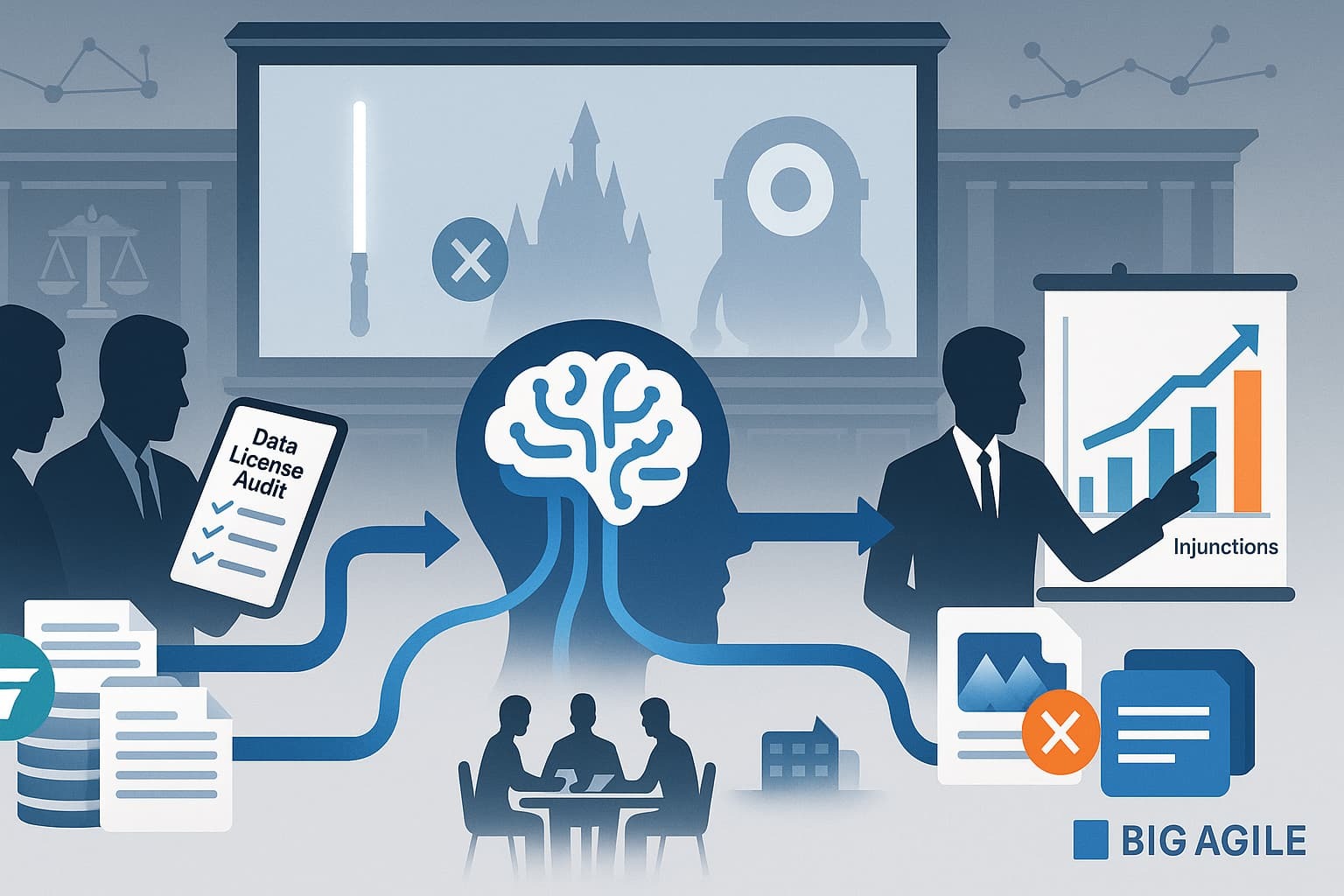
Did you know?
On June 11, 2025, The Walt Disney Company and NBCUniversal filed a federal copyright infringement lawsuit in the U.S. District Court for the Central District of California against Midjourney, one of the leading AI image generation platforms.
The studios accuse Midjourney of training its models on “innumerable” copyrighted images, ranging from Darth Vader in Star Wars to Elsa from Frozen and the Minions, without permission, and monetizing the resulting derivative works through subscription fees. Disney and Universal seek injunctive relief to stop further use of their content and statutory damages of up to $150,000 per infringed work.
So What?
This landmark suit marks a turning point in how businesses must approach AI training data and intellectual property:
- Legal Precedent & Risk
Before this, many AI firms defended unlicensed training under “transformative use.” Now, major rights holders are directly challenging that stance, threatening substantial damages and operational injunctions. - Data Governance Imperative
The case highlights the necessity for rigorous data preprocessing and curation. As the Introduction to Data Mining notes, effective knowledge discovery relies on cleaning, fusing, and validating data before model training, steps that, if applied to copyrighted content, must include rights verification and licensing checks. - Human-Machine Collaboration Ethics
From a collective-intelligence perspective, AI systems should enhance human creativity, not infringe upon it. Thomas Malone’s “Superminds” framework reminds us that as AI becomes “computers in the group,” governance and values must steer our global supermind, balancing innovative potential with respect for creators’ rights.
Now What?
To safeguard both innovation and compliance, organizations should:
- Audit & Map Training Data
- Catalogue all datasets used for AI model training.
- Identify any proprietary or third‐party content and trace licensing status.
- Establish Robust Data Pipelines
- Integrate rights‐management checks into preprocessing; data fusion, cleansing, annotation, and postprocessing must include copyright filters or metadata tagging.
- Automate anomaly detection and drift monitoring to flag unlicensed content before it contaminates production models.
- Develop Licensing & Partnership Strategies
- Negotiate enterprise‐wide licensing agreements with content owners or adopt open‐content sources.
- Invest in first‐party data collection and enrichment to reduce dependency on scraped web data.
- Embed Ethical AI Governance
- Form a cross‐functional AI ethics council, including legal, product, and data science, to oversee compliance with emerging copyright laws.
- Train teams on responsible AI development practices, emphasizing both innovative value and creators’ rights.
- Engage in Industry Dialogues
- Collaborate with peers, trade associations, and regulators to shape fair‐use guidelines that balance creative protection with AI advancement.
Catalyst Questions for Leaders
| Starting Question | Probing Question |
|---|---|
| How comprehensive is our AI training-data inventory? | “Can we trace the licensing status of each dataset element back to its source?” |
| What automated controls do we have to prevent unauthorized content ingestion? | “Which preprocessing steps include copyright-compliance checks, and how often are they audited?” |
| How can we pivot to first-party or licensed datasets without stifling innovation? | “What incentives or tooling would encourage teams to prioritize proprietary data collection?” |
| In what ways are we preparing for evolving AI-copyright regulations? | “Which regulatory bodies or legal precedents are we monitoring, and how are we adapting our policies?” |
| How will we measure the success of our ethical AI governance framework? | “What key metrics, such as % of licensed data or number of compliance incidents, should we track?” |